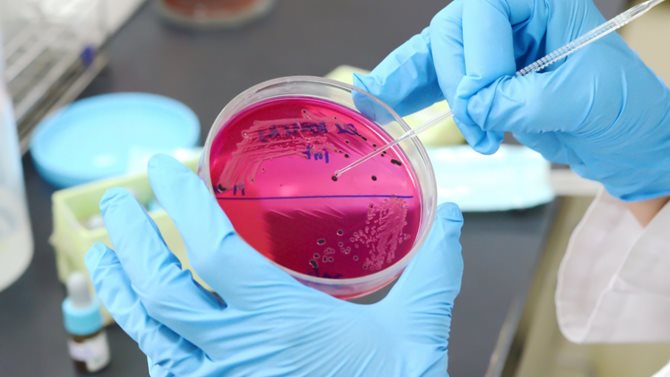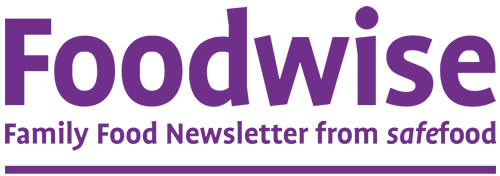Occurrence of Salmonella on pork on the island of Ireland and an assessment of the risk factors

- Project start date: 1 July 2005
- Project status: Completed
- Project type: Food safety
- Discipline: Microbiology and food hygiene
- Author/s: Dr Geraldine Duffy, Teagasc Food Research Centre, Dublin
- Collaborator/s: Dr Patrick Naughton, University of Ulster, Prof Seamus Fanning, Dr Nola Leonard & Dr Francis Butler, University College Dublin, Dr Robert Madden, Queen’s University Belfast
Research objective
The primary objective of this study was to investigate the occurrence and transmission of Salmonella in the pork supply chain on the island of Ireland. The research aimed to identify the prevalence of Salmonella at various stages, from farm to retail, and to assess the risk factors contributing to its transmission.
It involved microbiological studies tracking Salmonella status in pigs through the pork chain, from farm to primal cuts, and the development of a quantitative microbial risk assessment model for Salmonella on pork cuts. The study also sought to determine effective control measures and interventions to reduce the risk of Salmonella contamination throughout the pork supply chain.
Outputs
Research report
- Title: Unpublished report
- Date: 1 September 2006
- Summary: This research examined the prevalence and transmission of Salmonella in the pork supply chain in Ireland, focusing on contamination from the farm to retail level. Microbiological studies tracked Salmonella in pigs and pork cuts, and a quantitative microbial risk assessment model was developed to assess risks from slaughter to boned-out cuts. The study also included an expert elicitation to rank potential control measures.
- Findings:
Salmonella Prevalence in Boning Halls:
- Ireland: 3.3% of pork cuts contaminated.
- Northern Ireland: 8.38% of pork cuts contaminated.
- Variation in contamination between different days and production times, with higher prevalence in the afternoon.
Salmonella Prevalence at Retail:
- Ireland: 2.60% in butcher shops and supermarkets.
- Northern Ireland: 5.5% in retail samples.
- Cross contamination evident between samples.
Transmission Tracking:
- Transport in contaminated trucks and lairage were significant contamination sources.
- Cross contamination during slaughter and processing accounted for up to 69% of carcass and pork cut contamination.
- Significant variability between factories and different days of operation.
Dominant Serotypes:
- S. Typhimurium (50%) and S. Derby (20%) were the main isolates, most being antibiotic-resistant.
- Recommendations:
On-farm Interventions:
- Implement Good Agricultural Practices (GAP) and hygiene measures with all-in/all-out policies.
- Use appropriate feed.
- Enhance education and awareness among farm workers.
Lairage Improvements:]
- Minimise time pigs spend in lairage.
- Improve cleaning protocols.
- Separate herds from different farms and different category herds.
Slaughter/Processing Interventions:
- Ensure careful evisceration practices.
- Implement bagging of the bung.
- Adopt logistic slaughter methods.
Retail and Consumer Education:
- Educate consumers on cross contamination risks.
- Train retail workers on proper hygiene practices.
Overall, the study emphasised the need for a combination of interventions across the entire pork supply chain to effectively control Salmonella, highlighting that no single measure would be sufficient on its own. The integration of risk modelling with cost-benefit analysis was recommended to optimise intervention strategies.
Other outputs
Duggan, S.J., Mannion, C., Prendergast, D.M, Leonard, N., Fanning, S., Gonzales-Barron, U., Egan, J., Butler, F. and Duffy, G. (2010). “Tracking the Salmonella status of pigs through the slaughter process in the Republic of Ireland”. Journal of food Protection 73, 12: 2148-2160.
Gonzales Barron, U., Soumpasis, I., Butler, F., Duggan S., Prendergast, D. and Duffy, G. (2009). “Estimation of prevalence of Salmonella spp. on pig carcasses and pork joints using a quantitative risk assessment model aided by meta-analysis”. Journal of Food Protection, 72(2): 274-285.
Gonzales Barron, U., Soumpasis, I., and Butler, F. (2009). “An appraisal of the use of meat juice serology monitoring data for estimating prevalence of caecal Salmonella carriage of pigs at slaughter by means of herd-level and animal-level simulation”. Journal of Food Protection, 72(2): 286-294.
Gonzales-Barron, U., Soumpasis, I., Butler, F. and Duffy, G. (2008). ”A comparison between herd-level and animal-level simulation for estimation of prevalence of Salmonella in caecal contents of slaughter pigs in Ireland from meat juice serology”. Risk Analysis. In press.
Gonzales Barron, U., Bergin, D. and Butler, F. (2008). “A meta-analysis study of the effect of chilling on Salmonella prevalence on pork carcasses”. Journal of Food Protection, 71 (7) 1330 – 1337.
Mannion, C., Egan, J. Lynch, P. Fanning, S. and Leonard, N. (2008). “An investigation into the efficacy of washing trucks following transportation of pigs – a Salmonella perspective”. Foodborne pathogens and disease 5 (3).
Prendergast D.M., Duggan, S.J., Gonzales-Barron U, Fanning S, Butler F, Cormican M, and Duffy G. (2009). “Prevalence, numbers and characteristics of Salmonella spp. on Irish retail pork”. International Journal of Food Microbiology 131(2-3):233-239.
Prendergast, D.M., Duggan, S.J., Fanning, S., Cormican, M., Gonzales Barron, U., Butler, F. and Duffy, G. (2008). “Prevalence and numbers of Salmonella spp. and Enterobacteriaceae on pork cuts in abattoirs in the Republic of Ireland”. J Applied Microbiology. 105(4): 1209-1219.




